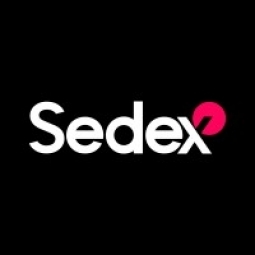适用功能
- 物流运输
- 采购
用例
- 库存管理
- 供应链可见性(SCV)
关于客户
Molson Coors 是一家全球知名的饮料公司,位居全球第五大。该公司在 100 个国家开展业务,主要以其啤酒品牌而闻名,包括 Coors Light、Miller Lite 和 Carling。然而,他们的产品组合还包括各种非酒精饮料。为了保持在全球市场的竞争优势,Molson Coors 高度重视道德、负责任和守法的运营。这一承诺也延伸到了他们的供应商,他们要求供应商同样高标准。该公司致力于改善供应链管理、提高供应商绩效并提高运营透明度。
挑战
Molson Coors 是全球第五大饮料公司,业务遍及 100 个国家,以 Coors Light、Miller Lite 和 Carling 等流行啤酒品牌而闻名。为了在全球市场上竞争,Molson Coors 需要为自己及其供应商维持严格的标准。他们的目标是道德、负责任且遵守法律。然而,他们在了解供应链、设定可衡量的目标和改进流程方面面临挑战。他们还希望更好地了解供应商的运营情况,并引发围绕可持续发展风险和缓解计划的对话。此外,他们需要加强向投资者提供的环境、社会和治理 (ESG) 报告,并提高供应商的参与度和绩效。
解决方案
Molson Coors 加入 Sedex 是为了更负责任地采购,并确保其供应链遵循道德和可持续的商业实践。他们使用 Sedex 平台作为采购管理流程的一部分,以更好地了解供应风险,并确保供应商遵守道德和可持续运营的高商业标准。 Sedex 的管理控制评分使 Molson Coors 能够轻松报告供应商对自我评估问卷 (SAQ) 的五个关键风险领域的回答:劳工标准、健康与安全、商业道德、环境和供应链管理。他们通过从供应商处收到的 SAQ 数据,从少量问题扩展到关注所有风险领域,从而扩大了关注范围。他们还使用管理控制评分来帮助公司更加关注向投资者和分析师报告供应链绩效和活动。
运营影响

Case Study missing?
Start adding your own!
Register with your work email and create a new case study profile for your business.
相关案例.

Case Study
Remote Temperature Monitoring of Perishable Goods Saves Money
RMONI was facing temperature monitoring challenges in a cold chain business. A cold chain must be established and maintained to ensure goods have been properly refrigerated during every step of the process, making temperature monitoring a critical business function. Manual registration practice can be very costly, labor intensive and prone to mistakes.

Case Study
Hospital Inventory Management
The hospital supply chain team is responsible for ensuring that the right medical supplies are readily available to clinicians when and where needed, and to do so in the most efficient manner possible. However, many of the systems and processes in use at the cancer center for supply chain management were not best suited to support these goals. Barcoding technology, a commonly used method for inventory management of medical supplies, is labor intensive, time consuming, does not provide real-time visibility into inventory levels and can be prone to error. Consequently, the lack of accurate and real-time visibility into inventory levels across multiple supply rooms in multiple hospital facilities creates additional inefficiency in the system causing over-ordering, hoarding, and wasted supplies. Other sources of waste and cost were also identified as candidates for improvement. Existing systems and processes did not provide adequate security for high-cost inventory within the hospital, which was another driver of cost. A lack of visibility into expiration dates for supplies resulted in supplies being wasted due to past expiry dates. Storage of supplies was also a key consideration given the location of the cancer center’s facilities in a dense urban setting, where space is always at a premium. In order to address the challenges outlined above, the hospital sought a solution that would provide real-time inventory information with high levels of accuracy, reduce the level of manual effort required and enable data driven decision making to ensure that the right supplies were readily available to clinicians in the right location at the right time.







